Rules for caring for gooseberries after harvest in July and August
Early gooseberries ripen in early June, mid-ripening ones in mid- or late July, late ones in August. In order for the plant to be healthy and productive, summer residents take care of it not only before picking berries, but also after. Care procedures - watering, pruning, weeding, protection from diseases and pests - make the bush stronger and prepare it for winter. If you neglect them, next year the yield will decrease and the shoots will grow more slowly. Let us consider in detail what to do with gooseberries after picking the berries and what agrotechnical procedures to pay special attention to.
Caring for gooseberries after harvest in July - August
Gooseberry care similar to caring for currants. The procedures are simple and do not require special training or extensive knowledge in the field of gardening. The main thing is to comply with the timing of events and not forget about the nuances.
How to feed gooseberries and currants
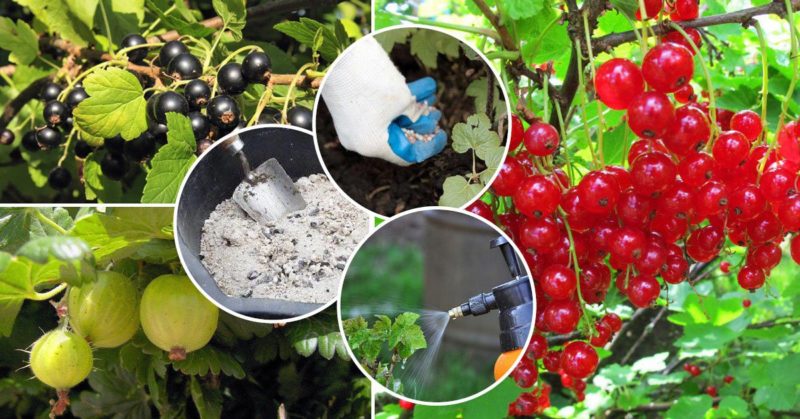
Feeding gooseberries and currants after harvesting increases the immunity of berry bushes, their resistance to diseases and pests, and prepares roots and shoots for wintering. For fertilizers, summer residents use organic, mineral or complex fertilizers. The application interval is 15-20 days, depending on the age and condition of the bush.
How to feed gooseberries after fruiting:
- From mineral fertilizers use potassium sulfate, superphosphate or potassium salt. The components are added in liquid form - 30 g of the substance is dissolved in 10 liters of clean water.The shrub is pre-watered with warm water, then fertilizing is applied to the tree trunk circle. Fertilizer helps to establish buds for next year and replenishes the lack of potassium and phosphorus.
- Organic fertilizer Apply once every 2 years. 300 g of vermicompost are dissolved in 10 liters of water, stirred and applied under the bush. Sprinkle 1 kg of dry wood ash on top and lay out mulch - humus, hay, sawdust, dry grass. It is not recommended to fertilize the soil with organic matter more than once every 2 years - this will lead to an overabundance of substances and diseases.
- At the beginning of autumn, gardeners apply ready-made complex fertilizers, for example, liquid fertilizer for berry bushes from Fasco. It stimulates the development of shrubs and increases the stress resistance of gooseberries and currants. They also use the fertilizer “Ryazanochka A” - it contains phosphorus, nitrogen, potassium, boron, zinc, molybdenum and cobalt. To prepare the solution, 10 liters of water and 4 ml of fertilizer are required.
Watering and weeding
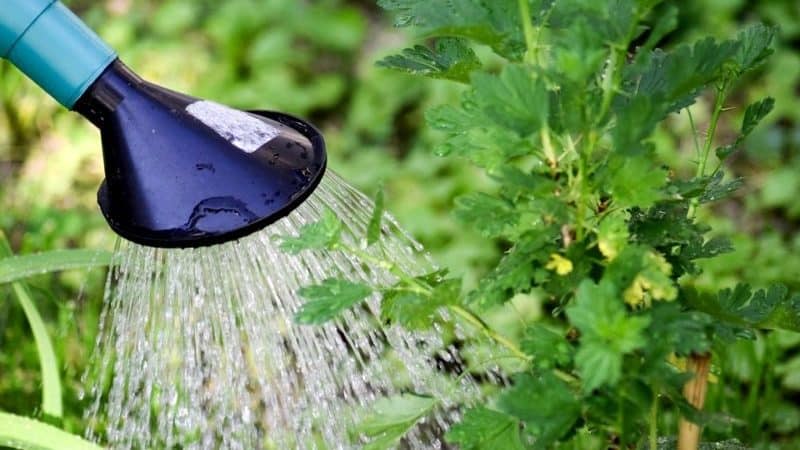
In the first 2 years after planting, the berry plant needs regular watering - Every week 5-7 liters of water are added under the bush. After harvesting the fruits, the amount of water is reduced - about 3-4 liters are spent per bush. You cannot forget about watering, since after picking the berries, gooseberries and currants begin to lay fruit buds. If there is a drought at this time, there will be few of them. After summer, summer residents add 3-4 buckets of water to each bush.
Attention! To avoid erosion of the soil and stagnation of liquid near the root collar, gardeners dig a groove 5-7 cm deep around the perimeter of the crown. In this case, it is convenient to use drip irrigation - the plants are always moistened, and water consumption is reduced.
Weed gooseberries and currants as weeds appear under the bushes and between the rows. The berry garden should always remain clean and well-groomed. Creeping wheatgrass, field bindweed, and stinging nettle are often found in the areas. Weeds are removed by hand, uprooting them from the ground. If weeds are not removed, the likelihood of diseases and insect pests increases. Summer residents combine weeding with loosening the soil to a depth of no more than 6 cm.
Trimming
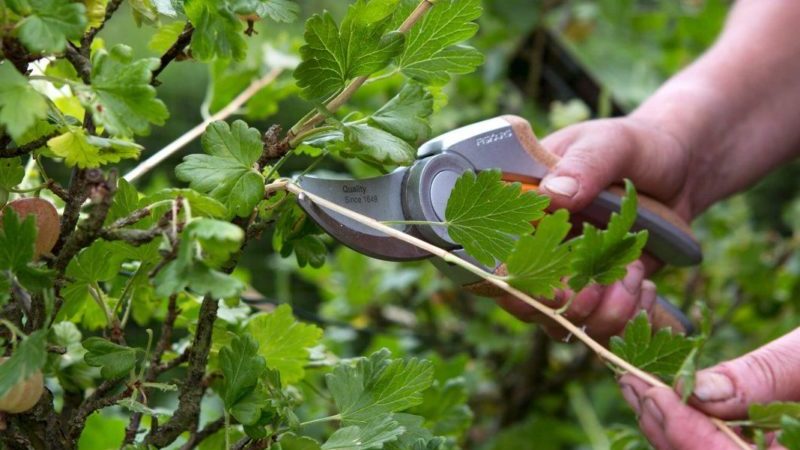
The right time for trimmings - late summer or early autumn. In September, shrubs need a sanitary or thinning procedure, when diseased, dry and weak shoots are cut off. Thick branches with shoots and directed inside the bush must also be removed. Of the branches growing at the base, only 4-5 of the largest and most fruit-bearing ones are left.
Trimming ensures proper development of the bush, protects against pests and stimulates the formation of fruit buds. For the procedure, use sharp pruning shears, previously disinfected with a solution of potassium permanganate.
Sometimes gooseberries are not pruned, but thinned out - shoots and short shoots are removed. If this is not done, little light penetrates into the bush, the ovary decreases, and dangerous fungi and bacteria appear.
Treatment against diseases and pests
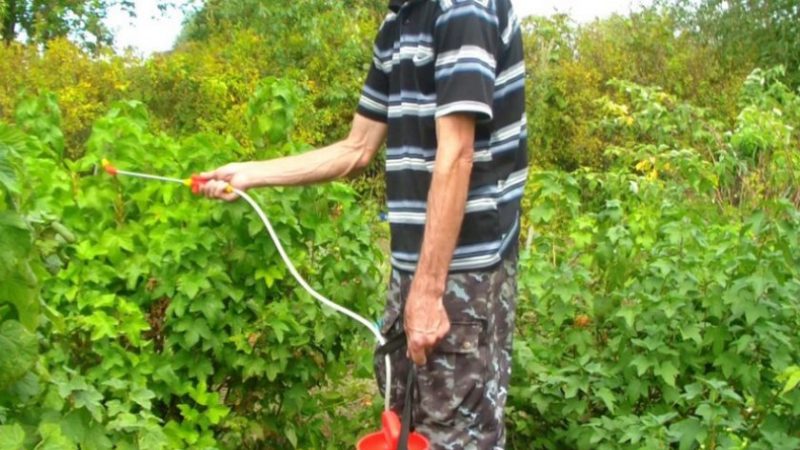
If, after harvesting, signs of disease or insect pests are visible behind the bushes, gardeners immediately begin treatment. If you do not do this, you can lose the entire future harvest and the plants themselves.
Shrubs are often affected by diseases:
- Septoria - a fungal disease accompanied by brown spots that increase in size over time and cover the entire leaf. Affected plants are removed and burned, and the remaining ones are treated with a solution of Bordeaux mixture or copper sulfate.As preventive measures, loosening and weeding, and spraying the bushes with Zircon solution are used.
- powdery mildew easy to recognize by the white coating on the leaves and shoots. The fungus spreads throughout the area with the help of wind or rain and is frost-resistant. Powdery mildew is treated with an ash solution - 50 g of the substance is required per 10 liters. As a preventive measure, a solution of boric acid is used.
- Anthracnose - a fungal disease that occurs due to dense plantings, high humidity, and an excess of microelements. Accompanied by brown bumps and spots on the leaves. Anthracnose is treated with a solution of copper sulfate - 100 g of the substance is required per 10 liters of water.
Among the insects that are dangerous for gooseberries and currants are aphids, spider mites, kidney mites, and glass beetles.. Pests are provoked by weeds, dense plantings, non-compliance with garden rules, and contaminated soil.
Many larvae overwinter in the ground and appear on the surface only in summer or spring. They get rid of insects with the help of biological insecticides “Kleschegon Super”, “Extraflor”, “Fitoverm”.
Autumn preparation for winter

Preparation for winter is carried out from the beginning of autumn until the first frost. They dig up and loosen the soil around the bush. If the ground is hard and heavy, use a shovel; if loose and light, use a pitchfork. When digging, it is recommended to be careful not to touch or damage the root system.
Over the entire area of the berry garden, the soil is dug up to 15-20 cm, under the crown - to 5 cm. Loosening saturates the roots with oxygen, destroys insects and weeds. Along with the procedure, you can add autumn fertilizer from organic matter.
Attention! In autumn, all foliage and debris are removed from under the plant.The collected plant residues are formed into a heap, taken outside the garden area and burned. Leaves cannot be used as mulch next year - fungi and bacteria can survive on them. After harvesting, the gooseberries are watered abundantly.
How to cover
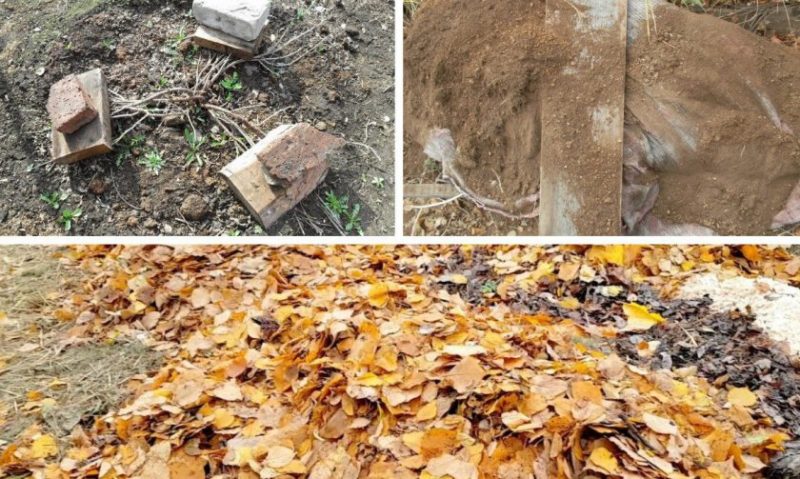
After digging and cleaning, they begin covering work.. This is especially true for young bushes growing in cold regions. The tree trunk circle is lined with mulch: dry branches, vermicompost, moss, rotted manure. In winter, such a layer will retain heat and protect the plant from winds and frost. Additionally, the branches are bent to the ground, sprinkled with earth and covered with pine spruce branches. Sprinkle snow on top if it has already fallen.
The covering material agrospan is also convenient to use. It prevents plants from overcooling, balances day and night temperatures, and protects against diseases and pests. Agrospan allows air and light to pass through, weighs little and can be used for 3 years.
Conclusion
After harvesting, gardeners carry out preventive treatment against diseases and pests, and also remove old and diseased shoots. The berry garden is fed with mineral or organic fertilizers or ready-made complex preparations are used.
With the arrival of autumn, all garbage is removed from the site and burned, the ground under the bush is dug up and mulched. In cold regions, the plant is covered for the winter so that the shoots and roots do not freeze. Caring for the plant after harvest is just as important as during flowering and fruiting. It guarantees a healthy harvest for the next year.